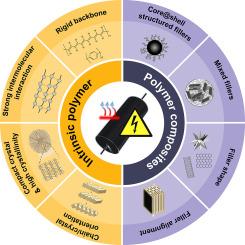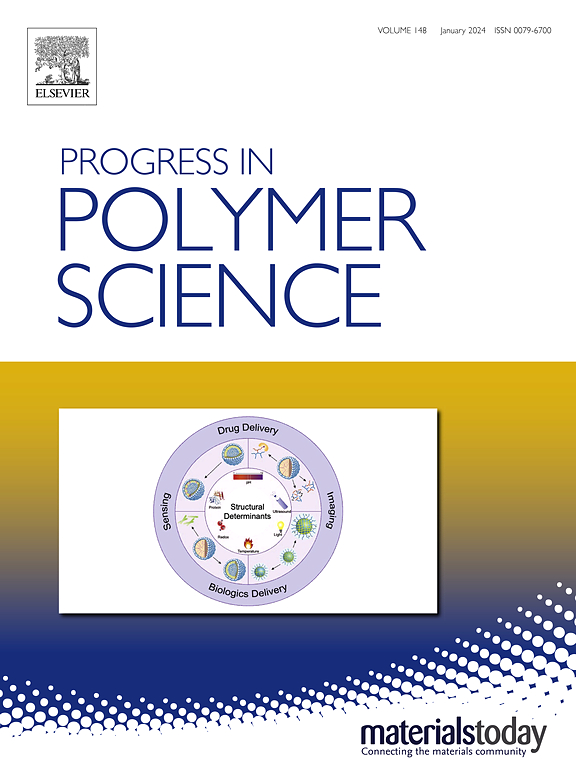Review of enhancing thermal conductivity in polymer-based dielectrics as passive components
IF 26.1
1区 化学
Q1 POLYMER SCIENCE
引用次数: 0
Abstract
Polymer dielectrics play a pivotal role in modern electronic applications, including oscillators, resonant circuits, electronic filters, and energy storage systems. However, the relentless pursuit of higher power densities and operating frequencies in next-generation electronics has led to exponential growth in heat generation. Conventional polymer dielectrics, with their inherently low thermal conductivity (< 0.5 W·m−1·K−1), struggle to dissipate this accumulated heat efficiently, leading to elevated operating temperatures and increased risk of premature dielectric breakdown. To ensure long-term stability and reliability in high-performance electronic systems, a fundamental understanding of heat transfer mechanisms and dielectric behaviour in polymers is essential. Furthermore, novel material‐design approaches are needed to boost dielectric performance and thermal conductivity in tandem, allowing polymer dielectrics to fulfil the exacting demands of next-generation passive components.


聚合物基介电体作为被动元件增强导热性的研究进展
聚合物电介质在现代电子应用中发挥着关键作用,包括振荡器、谐振电路、电子滤波器和能量存储系统。然而,在下一代电子产品中对更高功率密度和工作频率的不懈追求导致了热量的指数级增长。传统的聚合物电介质,由于其固有的低导热性(0.5 W·m⁻¹·K⁻),很难有效地散发这些积累的热量,导致工作温度升高和电介质过早击穿的风险增加。为了确保高性能电子系统的长期稳定性和可靠性,对聚合物中的传热机制和介电行为的基本理解是必不可少的。此外,需要新的材料设计方法来同时提高介电性能和导热性,使聚合物介电材料能够满足下一代无源元件的严格要求。
本文章由计算机程序翻译,如有差异,请以英文原文为准。
求助全文
约1分钟内获得全文
求助全文
来源期刊

Progress in Polymer Science
化学-高分子科学
CiteScore
48.70
自引率
1.10%
发文量
54
审稿时长
38 days
期刊介绍:
Progress in Polymer Science is a journal that publishes state-of-the-art overview articles in the field of polymer science and engineering. These articles are written by internationally recognized authorities in the discipline, making it a valuable resource for staying up-to-date with the latest developments in this rapidly growing field.
The journal serves as a link between original articles, innovations published in patents, and the most current knowledge of technology. It covers a wide range of topics within the traditional fields of polymer science, including chemistry, physics, and engineering involving polymers. Additionally, it explores interdisciplinary developing fields such as functional and specialty polymers, biomaterials, polymers in drug delivery, polymers in electronic applications, composites, conducting polymers, liquid crystalline materials, and the interphases between polymers and ceramics. The journal also highlights new fabrication techniques that are making significant contributions to the field.
The subject areas covered by Progress in Polymer Science include biomaterials, materials chemistry, organic chemistry, polymers and plastics, surfaces, coatings and films, and nanotechnology. The journal is indexed and abstracted in various databases, including Materials Science Citation Index, Chemical Abstracts, Engineering Index, Current Contents, FIZ Karlsruhe, Scopus, and INSPEC.
 求助内容:
求助内容: 应助结果提醒方式:
应助结果提醒方式:


